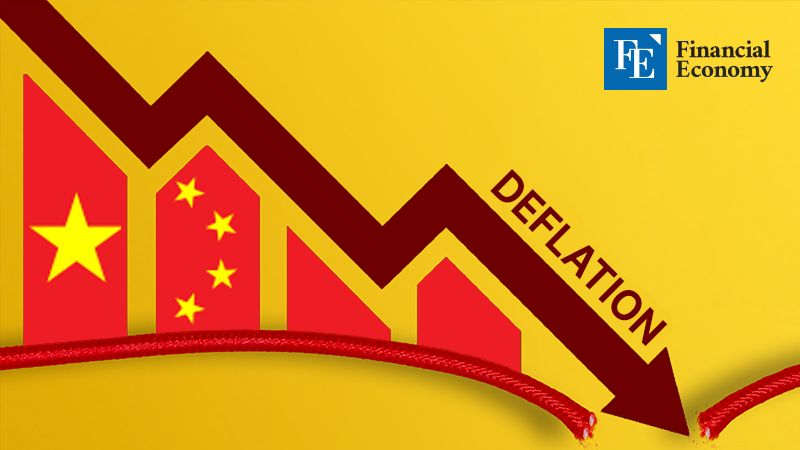Revival of consumption elusive, stagnation of stimulus, destabilization of global economy by China’s deflation
Input
Modified
Housing investment boom as stimulus a decade ago Constraints of high debt and low interest rates on accommodation today Vicious cycle of weak domestic demand and fire-sale export offensives eroding global economy

Beijing has moved to rein in overcapacity in sectors such as electric vehicles and solar panels in a bid to counter deflationary pressures. Yet analysts argue these measures are little more than a stopgap. With exports constrained by tariff battles with the United States, the critical challenge lies in reviving domestic consumption. Without demand-side incentives—the proverbial “carrot”—mere supply restrictions are unlikely to deliver meaningful impact.
“Limits of supply controls in overcoming stagnation”
Bloomberg reported on the 25th (local time) that China’s recent clampdown on excess capacity has helped ease surpluses in areas like steel and solar, but that large-scale stimulus is conspicuously absent. Christopher Beddor, deputy director of China research at Hong Kong investment research firm Gavekal Dragonomics, noted: “Simply replaying the 2015 playbook will not work. The fundamental problem is broad-based macroeconomic weakness in household demand, which cannot be solved by a series of ad-hoc government interventions to curb competition in selected industries.”
In 2015, confronted with deflation, Beijing both policed oversupply and fueled a $900 billion housing investment surge, which stabilized the economy. President Xi Jinping is seen as attempting to apply the same formula today, but without a viable ignition point for growth, such efforts may backfire. Worse still, policy space has narrowed sharply. A decade ago, China’s total debt barely exceeded 200% of GDP; today it has climbed above 300%. Benchmark interest rates stand at just 1.4%, leaving the People’s Bank of China with limited room to cut further.
Experts stress that in the absence of fiscal capacity for sweeping stimulus, Beijing must pursue deeper structural reforms. Yet the government remains not only in denial but at times implicitly tolerates deflation in certain industries to preserve export competitiveness. Deflation itself remains taboo in Beijing’s official discourse, absent from economic policy statements or press briefings. Weak data are routinely blamed on external shocks such as trade wars. Some officials even downplay the risks, suggesting “falling prices are not necessarily bad.”

Rising equities, falling consumption
Policy missteps are evident. In an effort to offset export losses from trade disputes, authorities are redirecting surplus inventories toward the domestic market. This not only fails to resolve overinvestment and oversupply but further dampens consumer sentiment. The irony is visible in China’s stock market. Bloomberg data show mainland equities have added $1 trillion in market capitalization over the past month alone. The Shanghai Composite Index has surged more than 14% year-to-date to a decade high, while the CSI300 Index of Shanghai and Shenzhen blue chips has risen over 11% in the same period—more than 20% above its yearly low. These gains eclipse the 10% rally in the S&P 500.
The rally reflects capital flight from less attractive assets such as property and bonds, as high-net-worth individuals and institutions crowd into equities. Heightened uncertainty over future income has fueled precautionary saving and investment, rather than household consumption. This illustrates the pernicious nature of deflation: as consumers anticipate lower prices, they defer spending, cutting into corporate revenues and profits. Businesses respond by slashing wages, jobs, and investment. Households tighten belts further, dragging prices down still more—a self-reinforcing spiral.
China’s deflationary exports weigh on the world economy
That spiral has global consequences. Confronted with slowdown and deflationary strain, China is attempting to export its way out—effectively “exporting deflation.” The flood of ultra-cheap Chinese goods threatens the industrial competitiveness of countries with similar export structures. For nations like South Korea, where trade represents a high share of GDP and exposure to China is deep, the risks are acute. Margins are squeezed, industrial bases erode, and long-term sustainability is put at risk.
The fallout extends beyond advanced economies. Across Latin America, Asia, and Africa, developing nations are confronting a new wave of the “China shock” that Western economies experienced in the late 1990s and 2000s. Domestic industries are being gutted by imports priced far below local goods, triggering bankruptcies, layoffs, and social strain.
Thailand has been particularly hard-hit. According to the Ministry of Industry, from 2021 to May last year, 3,500 Thai firms—mainly in plastics, leather, rubber, machinery, metals, and wood processing—shuttered operations. Monthly bankruptcies averaged 57 during the pandemic year of 2021 but climbed to 97 in 2023. The Thai Federation of Industries has warned of a manufacturing crisis. Chairman Kriengkrai Thiennukul stated, “Chinese low-cost goods, entering through both legal and illegal channels, have placed Thai manufacturers under severe competitive pressure. Of 45 industrial sectors last year, 20 were affected by such dumping.”
Vietnam is also reeling. Its parliament suspended the services of Chinese e-commerce platform Temu last December, and from last month began imposing a value-added tax of up to 10% on imports priced below $40. Indonesia, Southeast Asia’s largest market, barred TikTok’s shopping service last June and has blocked Temu’s entry as well. The evidence is mounting: China’s attempts to manage deflation through excess supply and cheap exports are not only undermining domestic demand but also exporting economic stress worldwide.





















